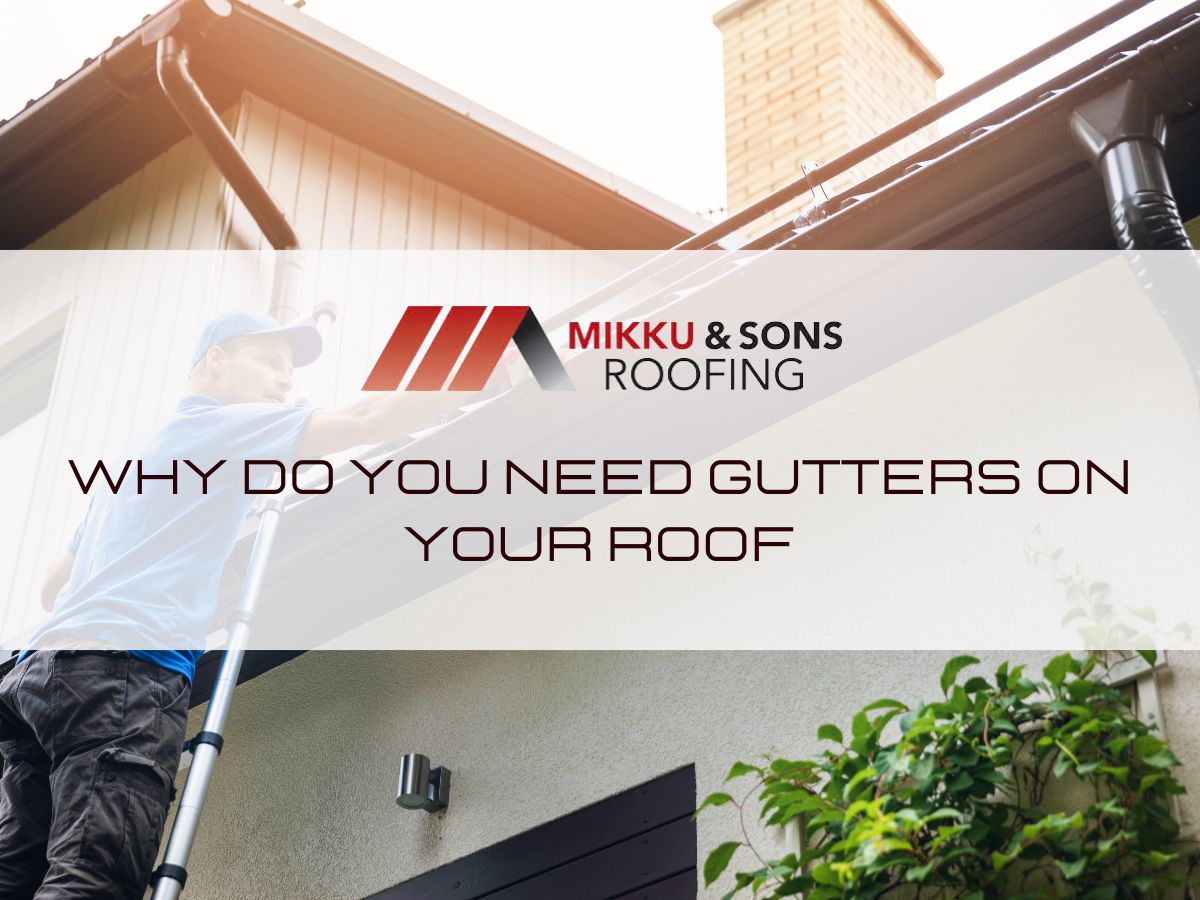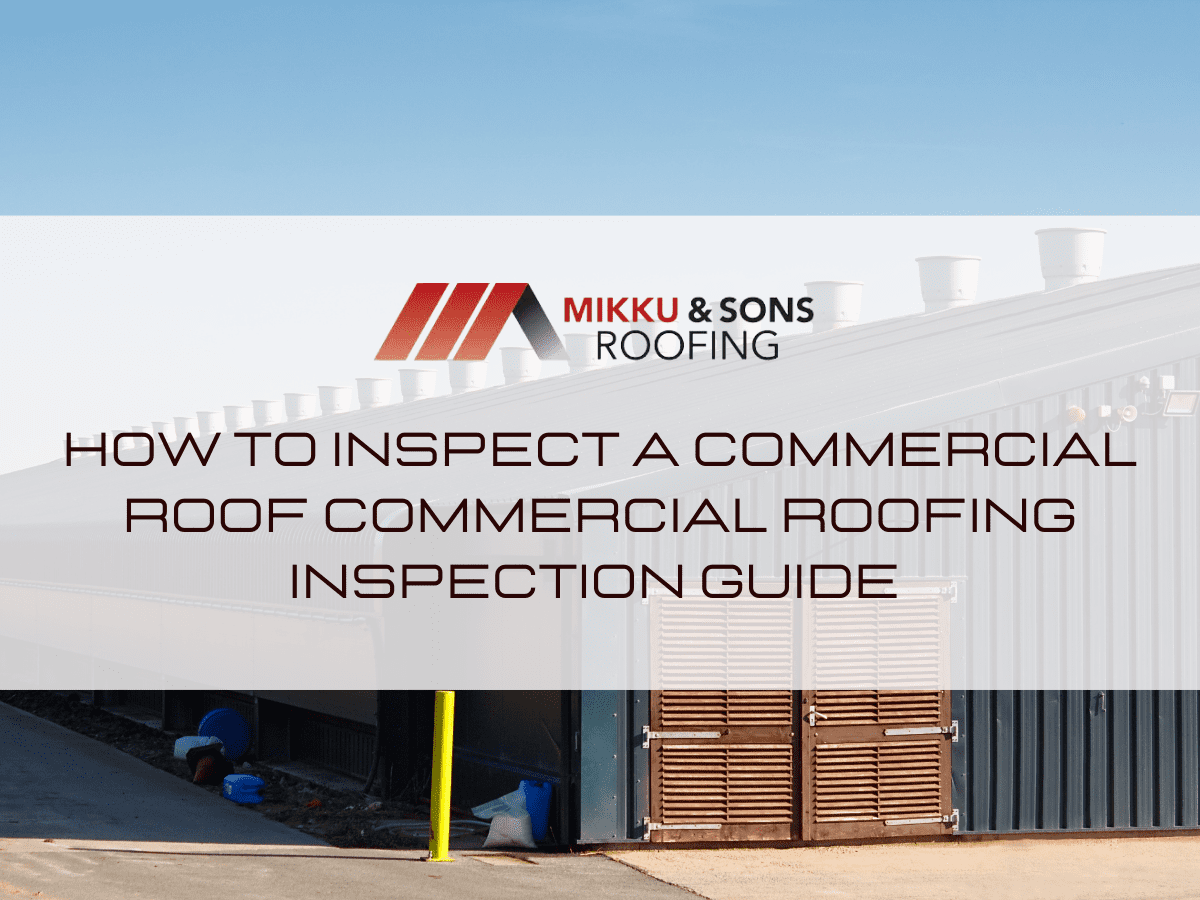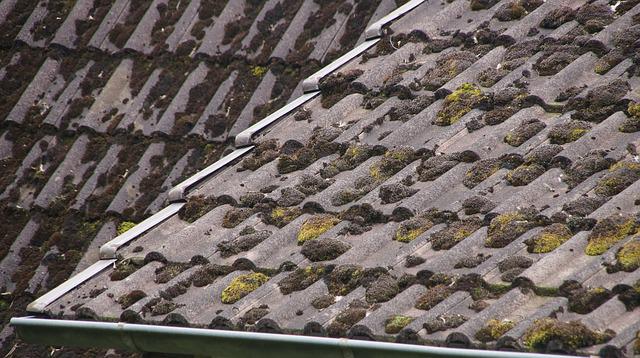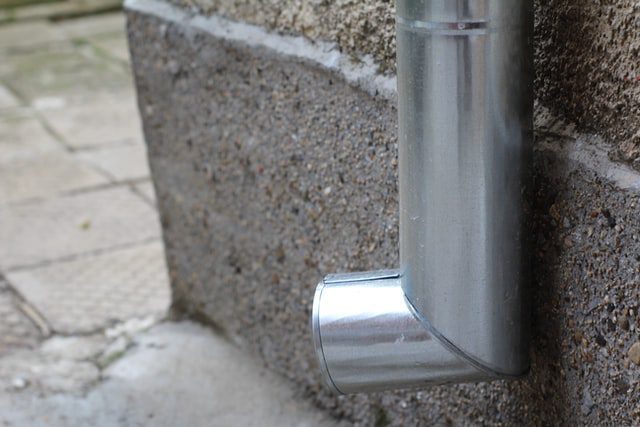

Roofs protect a structure as well as its contents from the elements. They are installed with materials that have estimated lifespans which can be compromised at any given time without proper care and maintenance.
Commercial roof inspections require extensive skill and understanding. Commercial roofs are often larger and have a lower slope or are completely flat and are therefore more difficult to maintain.
When inspecting your roof, it's not enough to look for rust or water spots or take a walk around the perimeter of your building. Routine inspections and minimal maintenance can help building owners prevent costly problems due to the changing seasons and temperatures.
This article details 10 tips on how to inspect a commercial roof.

Roof inspections save money by preventing costly repairs and identifying problems early before they develop. Property owners utilize inspection data to allocate maintenance funds.
Maintaining the roof helps reduce the risk of lawsuits because when it comes to your health and your wallet, a poorly maintained roof can be dangerous. Maintaining your roof might save you money because roof maintenance typically reveals minor concerns that can be fixed before they become huge, costly problems.
Roofs should be inspected often to prevent damage to sensitive equipment. Building inspections discover flaws and protect staff and others safe. It helps property owners with preventative maintenance.
To avoid major problems, commercial building owners need to keep their roofs in good condition. Without regular inspections, your building could be closed as regular roof, and facade inspections keep buildings safe, efficient, and in good shape.
Commercial roofs may need more frequent inspections than the twice-yearly spring and fall checks. Roof inspections may discover repair opportunities and sites for telecom towers or solar panels, allowing you to monetize your roof.
| Tip | Importance |
| Detailed roof inspection | Shows areas that need attention |
| Clean debris | Reveals any damage and prevents roof damage |
| Inspect for ponding water | Prevents roof failure |
| Look at the flashing | Ensures no developing roof damage through leaks |
| Check the roof for cracks or tears | Prevents any damage to the roof interior through leaks |
| Inspect the parapet walls, if any | They are areas at risk of water damage |
| Check the drip edges | They prevent interior roof damage |
| Inspect the roof surface | Reveals any developing damage |
| Inspect the gutters | Clogged gutters may promote pooling on the roof |
| Check the downspouts | Downspouts direct water away from the gutters |
An assessment of a building's roof is a serious matter that should be handled by a roofing professional. Commercial building owners should get an industrial roof inspection at least twice a year to ensure that their roofs are in good condition and safe.
Inexperienced roofers may cause costly repairs that may have been avoided if a competent business roof contractor had conducted the checks. There are many issues that could befall your roof at any time during the year.
Many issues might arise during commercial building inspections, but only if you hire a qualified inspector who knows how to do each of these processes correctly. That way, you can avoid the need for costly roof repairs when the damages become worse.
1. Conduct a detailed roof inspection
In order to guarantee that your commercial roof remains in good condition, you must do a thorough examination.
You can only address a problem if you are aware of it, and you can do so by knowing the problems. The following are some of the problems that a professional inspection will illuminate for you:
Commercial roof inspections allow you to catch problems before they become a big problem. Before the cold weather sets in, inspect the roof for any damaged flashing, buckling, or split seams.
Problems like wind-related cracks and clogged gutters can be identified in an inspection before they become costly damages that require repair. Summertime breezes can develop little cracks that can grow during the winter.
Make sure you get in touch with a reputable commercial roofing contractor who can identify any potential issues. Check the commercial roofing checklist with your inspector to see if there are any obstacles or clogs.
2. Clean Debris

Keeping your roof clean and clear of snow, ice, debris, and other natural elements can ensure its longevity and reduce property damage.
Algae and moss can damage your roof through shingle disintegration and wood rot. They can cause costly repairs, but this is eliminated through regular roof cleaning.
Regular roof cleaning prevents decay from the accumulation of dirt, moss, and algae. Cleaning your roof regularly is important for its structural integrity and the safety of your home and goods in any conditions.
Remove anything from your roof but consult a professional because as much as roof cleaning is possible, conducting it yourself can be dangerous. Debris on your commercial roof should be a priority as bird nests, or other animals can cause future difficulties.
A commercial roof's drainage system may be damaged by tree debris. Branches and leaves must be removed from drains and roof corners for water to flow freely.
3. Inspect for ponding water
Ponding occurs when water pools on a flat roof, forming ponds usually after a downpour. Most pools leak or evaporate, but a roof that doesn't drain rainwater for two days or longer, even while other parts of the roof are dry, is prone to pooling.
Water near roof drains can create color changes and stains. Check slow-draining lines and occluded areas for ponding.
An expert evaluation may reveal concealed water damage and determine the underlying damage. Before your roof inspection, remove any standing water but take photos of the damage before and try to determine how long it's been there.
Water ponding can damage your roof. Ponding water might cause roof leaks creating a habitat for termites, roaches, and beetles, which infest your roof and do considerable damage.
4. Look at the flashing
Flashing protects flat and slanted roofs against flooding. Stacks, walls, and curbs should be inspected for flashing. Check for cracks or breaches that could let water in before the rainy seasons.
Look for fractures that let water in, especially at the flat-to-vertical transition. Changeover points have more cracks, and other issues and leakages are more common, typical where the flashing connects to the roof.
Flashing surrounds skylights, chimneys, and vents on commercial roofs, and they keep water from damaging areas of the roof. Flashing stops rainwater from leaking into the roof deck, which manifests as peeling or splitting at the caulking.
Flashing protects a roof's most vulnerable parts. Thus, anyone evaluating the roof should pay careful attention to it. By maintaining your flashing, you may prevent roof leaks.
5. Check the roof for cracks or tears
A commercial roofing inspection is needed to determine whether the roof has structural damage from tears or cracks. A fractured roof surface can have serious repercussions if ignored, as your roof provides insulation, shelter, and energy efficiency.
The sooner you fix a roof tile crack, the better. Foot traffic, protruding nails, and intense storms produce roof cracks. Full horizontal or vertical breaks should not be repaired using adhesive. Valleys and penetrations are vulnerable to tears or cracks.
You may likely have to replace the roof if the damage is significant. You can conduct a flood test to check if the roof has tears or cracks. Flashing problems are easy to address if identified before the major water damage. Annual inspections ensure your roof's flashing remains watertight.
6. Inspect the parapet walls, if any
A parapet wall is simply a vertical extension of the wall. The walls protect the roof from water, air, and vapor and also aid in temperature regulation.
Corrosion and degradation of the roof or another pre-built nearby structure can be prevented by controlling these variables. Your roof's edge can be lifted and damaged by strong wind as a result of elevated wind pressures.
In order to determine if the wall is structurally sound, your expert inspector should check and address any concerns as soon as possible.
7. Check the drip edges
The edge of the roof's perimeter is covered in drip edge, which creates a watertight seal by keeping the underlayment in place. It is positioned exactly under the shingles and just above the facia.
A compromised drip edge allows water to seep into the roof under the underlayment. This is worse for the eave side of a roof that has clogged gutters.
It is imperative that all of these drip edges be anchored firmly and properly. Doing so will ensure that there are no openings in the structure that allow water, dirt, and other elements to get in.
8. Inspect the roof surface
The surface of the roof is the visible covering on the roof. The materials used on the roof covering vary in durability and how much maintenance they need.
Inspecting the edges of the roof is critical, especially along the windward edges, where storms are most likely to cause the roof covering to get lifted. During an inspection, look for any damage caused by the wind, which includes rips and tears.
The roof could also be damaged if it blisters in many parts of the roof. Blistering occurs when there are many air or moisture pockets that expand during hot weather to further damage the roof.
Everything on your roof that isn't part of the perimeter or flashing is referred to as the roof field. The deck of commercial roofing systems may reveal evidence of ripping in the membrane of the roofing system.
Any small invisible cuts on a roof may cause leaks. These can be identified through flooding, which is the method of testing the waterproofing system by allowing a regulated amount of water to remain on a horizontal surface for a predetermined period of time.
9. Inspect the gutters
Gutters play a role in directing rainwater from a roof down downspouts or water harvesting systems. Gutters on a commercial roof are important as the roofs are large and flat, therefore prone to pooling.
If the gutters are clogged, there is a high chance that water will pool on your roof. If the gutters sag or overflow during rainstorms, there is a high chance that the gutters aren't fully functioning.
PVC roof membranes on roofs don't quickly give way as a result of ponding, but other roof types, such as asphalt-based roofs, are more likely to fail. Remove any debris that has accumulated in the gutters to avoid this.
10. Check the downspouts

For your gutter system, the downspout serves as the outlet for the rainwater that falls from your gutters. Ground to roof inspection of your downspouts is important to assess whether the downspouts have been damaged or clogged.
Mechanical damage to the downspouts can occur when mowing grass or being crushed by an automobile like a forklift or something the sort. If there is mechanical damage to the downspouts, they will have to be fixed or, better, replaced.
Make sure your downspout water is directed away from your house so that it doesn't collect there. Pooling water at the base of a house damages the foundation as well as floods the basement if there are any open crevices.
Clogged gutters often direct some of the debris into the downspouts, and this can manifest as overflowing or sagging gutters during heavy rain. You can check if the downspouts are clogged by tossing a coin into it and checking if the coin will emerge from the bottom.

You can profit from employing an assessment checklist for commercial roofing projects, no matter how large or little they are. Controlling your company's operations is easier when everyone on your team is following a well-defined checklist.
A roof assessment checklist:
-Maximizes output and efficiency
-Minimizes errors and omissions
-Increases the effectiveness of roof inspections
-Cuts down on inspection times
-Customer satisfaction is improved.
-Facilitates the planning of tasks and managing staff
During the rainy or snowy days, roof leaks, frozen gutter drains, and an accumulation of snow might occur. A compromised roof will get damaged when this happens, and the best method to avoid these issues is to prevent them in the first place.
Roof damage may occur when it caves in if it's exposed to extremely windy or rainy circumstances and when cracks in your roof develop as a result of the expansion and contraction that temperature variations cause. These damages are all a result of thermal shock and roof structural failure.
Rainwater can also freeze in small fractures in the roof, posing a problem. As the temperature rises, the ice melts and expands the fissure and widens even further as the water freezes again.
